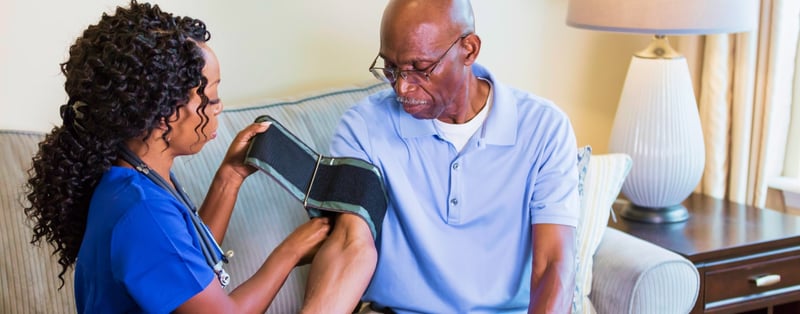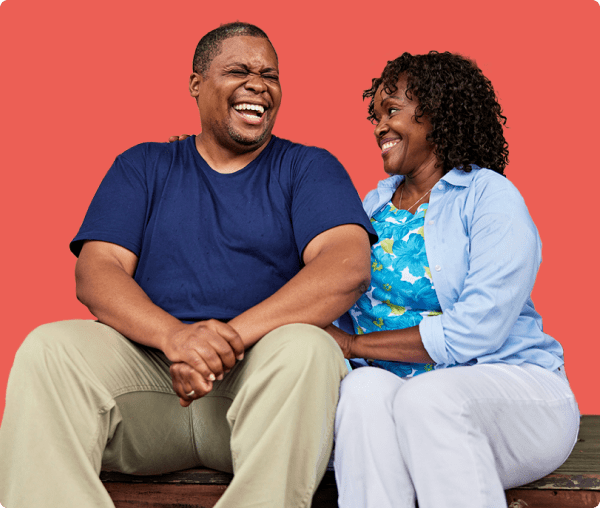A conversation with Robert Wood Johnson Foundation
 Gohar Chichian
·
8 minute read
Gohar Chichian
·
8 minute read

For the last six years, Catchafire and Robert Wood Johnson Foundation have partnered to provide capacity building support and professional development opportunities to nonprofits by connecting them to skills-based volunteers. With Robert Wood Johnson Foundation as the largest philanthropic organization dedicated solely to health, and an open access program that allows any New Jersey-based nonprofit to receive access to Catchafire, this program makes a healthy difference with statewide impact. Over the course of the partnership, over 57,000 volunteer hours have been donated to New Jersey nonprofits, with over $10 million in nonprofit value created.
Through their partnership with Catchafire, the Foundation aims to leverage the power of skills-based volunteering to build a powerful culture of health and connect New Jersey’s business and nonprofit sectors. A culture of health is one where good health flourishes across geographic, demographic, and social sectors, and attaining the best health possible is valued by our entire society. Health means more than healthy bodies and minds – it means a tightly knit society supporting all people in achieving the physical, social, economic, and emotional conditions that influence health.
To reach a society in which everyone in America has a fair and just opportunity for health and wellbeing, we must identify, understand, confront, and remove the structural barriers to health and wellbeing, including racism, powerlessness, discrimination, and their consequences. We hosted a discussion with Marjorie Paloma, Interim Vice President, Strategic Portfolios, and Maisha Simmons, Assistant Vice President, Equity & Culture, from the Robert Wood Johnson Foundation to learn about how they are examining and evolving their practices in order to improve their commitment to their mission and community. The event was moderated by Kathy Brady, Chief Operating Officer of Catchafire.
During the event, we discussed ways organizations can address racial equity internally and externally to improve their grantmaking practices. You can watch the event recording here.

Kathy: For success in community health, systemic racism has to be addressed. Robert Wood Johnson Foundation has been a leader in this work. Where did this insight come from – why the focus on systemic racism? Was it witnessing the civil rights injustices and realizing how that impacted health? Or was it discovering persistent barriers that were popping up in the grant work?
Marjorie: It's important to know that health equity has been a part of the Robert Wood Johnson Foundation since our founding. It’s evolved over time. If you go back five decades, we've always supported health innovations, and our founding mission really focused on healthcare access, quality, and policies. We funded a whole set of initiatives within the healthcare system to change practices to improve health outcomes. Over time, it became obvious that healthcare wasn't enough to advance health in this country. Our understanding of what creates health disparities deepened and our work really expanded beyond healthcare.
In 2009, we launched a commission to build a healthier America, which highlighted the social determinants of health. It said that good health includes things that are outside of the doctor’s office. In 2014, we launched our culture of health vision which led us to supporting more social and community conditions impacting health with a real focus on health equity.
Our expansion is getting underneath what are the root causes of those inequities, leading us into an even deeper understanding of how structural racism and other forms of oppression block people from living their healthiest lives possible. We became even more laser focused on the things we were doing previously to pull forward a focus on structural racism.
Maisha: The intentionality that has come after 2020 has really begun to shapeshift the ways that RWJF is investing in our work, the way that we are working internally as an organization, and who we see as our partners and collaborators as we think about this work. How are we working in solidarity and with the community?
Kathy: You talked about how the definition of health is outside of the doctor’s office and that was already embedded as RWJF was formed. Can you give more examples of what that looks like, and then even tying to what Maisha was saying, what does that mean in terms of the collaborators? How do we connect the dots from the definition to the who in the work?
Marjorie: In 2014, the commission to build a healthier America lifted up the importance of how community development and health can work together to improve healthier lives. You start to unpack the history of how communities were designed and the conditions that were set, and you go back and see the historical policies on redlining that separated communities based on race and shut down the opportunities for black and brown people. These opportunities connect to access to education, health, and resources, to be much more intentional about how history plays out into opportunities today. As we look at the work that we are doing with community development in those systems with health leaders and partners, we’re being very intentional about how history has shaped the opportunities, seeing what power looks like, and who has and has not historically been a part of decision making in communities.

Maisha: There were some changes we had to think about internally as well.
"One of the major shifts within the last three to five years has been pulling the equity work into the center and core business of the foundation. When you pull something into your core business, in order to think about change across the institution, that change has to be relegated to the highest level of your institution."
What is the power within the organization to think about the changes that need to happen wholeheartedly and across the board? We now have a department of equity and culture. Our CEO works very closely with the vice president of this department to think about the changes that need to happen throughout the institution.
What does it mean to normalize, organize, and operationalize this work? When normalizing it, it is coming to a common narrative and understanding how does health equity or structural racism impact everything from procurement to IT to our programming? When organizing, what are those ways we're bringing together people around the theory and the practice? So some ways to think about that are affinity groups, people who have come together around shared identities, whether it is racial identities or social identities, and thinking about how their daily work plays out with their identity in mind.
We have a group called the Equity Leadership Group. They think about the policies and practices that we have as an institution. Are they really equitable? How does that impact us as an organization? How does it impact our grantees, colleagues and partners? And then to operationalize, what are the policies and systems that we need to look at in terms of our HR policies, equitable grant making, and procurement policies?
We're at the beginning stages of thinking about how all of those pieces fit together for us as an organization, as we are moving in our mission to think about how structural racism and health come together to get the outcomes, the outcomes that we don't want, and how we really promote equity and justice to get to the outcomes that we need and want.
Kathy: What are some of the ways that the foundation has raised the profile of diversity, equity, inclusion, and structural racism as an area to tackle? How have you kept the momentum going?
Maisha: This is a shared value across our institution. We are thinking about what are the ways that we need to systemically change our operations to double down. One way that we’re doing that is launching a truth repair and transformation process. The reason why we’re doing that is, in order to speak about the issues and understand, we all need to understand what role we have.
Even though institutionally we've always had a commitment to working with communities who are impoverished or have poor health outcomes, we haven't always thought about what the equity imperative for what that change should look like. The ways of looking backwards to understand what's our role in the ecosystem, have we caused harm? It's something that philanthropy can do because we exist in a way that has not always prioritized the needs of communities.
We've thought about how research and the written word has driven some of the ways that we've thought about solutions. and hasn't always listened to what it means to partner the research with the narrative of the community and what they need. What's our role in the ecosystem? What is the repair? Being able to have a narrative about accountability in terms of the work that we do, the investments that we make, the issues that we prioritize, is a way to really double down on your commitment to an equity narrative. The issues that we are addressing did not happen overnight. It’s going to take a long-term view to think about the root causes.
Marjorie: I wanna lift up the intentionality that we are having in engaging our leadership. We have steadfast support from our leadership at the foundation, starting with our president and our board. That was a very intentional process of education, building awareness, creating the space to ask questions, and being able to provide support too.
Kathy: Tell us a little bit about how including your nonprofit community has been important to this work. What are some of the resources that you've rolled out for nonprofits that have supported the dismantling of systemic racism?
Maisha: During COVID, many foundations changed the rules, the rules that seem like they never could be changed. What we've been thinking about is, how do we systematize that moment?
- One of the things that we've done since COVID is increased general operating support, creating the way for grantees to do what they need to do, and creating pathways to more flexible funding.
- The other piece that we did was we took a look at our indirect cost rate, and we increased it for smaller organizations.
- We took a hard look at what it meant to increase our general operating support to create flexibility to invest in core needs of the organization so that they can do the training or the technical assistance that they need to do as an organization.
- We've done some very early partnership endowment grants with organizations to begin to think about what that pathway looks like both for us and for them, in terms of as they're growing the endowment and thinking about the needs of their organization.
We changed the game to say in terms of what is our role in shifting how there's ways that we could have been oppressive in terms of what we've done with how we thought about our work.
We’ve also thought about technical assistance and support in a very specific way. We partner with technical assistance organizations like Catchafire to provide the core support needs that grantees may have. We've done some work in just trying to learn about how do we shift that so that we're not providing kind of technical assistance in a box, but it is tailored to the needs of the community we've drawn in and come to the community and say, what do the needs look like for you and your organization? We’re shifting that dynamic of what it means to be community-centered.
We also began to think about accountability in a different way. We’ve launched a council, a group of 13 individuals, some are grantee partners and some are not. Our goal is to think about how to stay accountable to the community at the level of strategy. It’s an example of how we’re thinking about our investments, responsiveness to community needs, and pairing research that we’ve seen to remove obstacles to good health and well-being.
Kathy: We’ve been working together for years. While Catchafire is a tool that centers nonprofit needs, you also recognized that we weren’t going to give it to folks for one year. We’re going to let them use it because it's critical infrastructure. To go back to the structural concept, this is structural resourcing that has not existed. How do we go and leverage this? Some of the nonprofits we initially reached out to, many of them that we work with are small, they're $250,000 and below. They literally wrote back to us, is this a joke? Why would the Robert Wood Johnson Foundation fund us? Not because they didn't believe that Robert Wood Johnson Foundation would fund, but because nobody has funded them. That’s changed over time because they’ve seen the commitment that the foundation has made to the community.

I want to zoom out for a moment. Since it’s early stages, how are you measuring your progress? How does the foundation reflect and then take that forward?
Marjorie: It starts with ensuring that our staff understands the connection between structural racism and health. In terms of systems, it’s creating the conditions through policies and practices by which we are operating. For example, reporting requirements for grantees, how we send out invitations, how we have community conversations and convenings, these are all measures of progress.
Maisha: Every year we do a survey to grantees with the Center for Effective philanthropy. We’ve started to adjust questions to understand how we’re gathering data. We’re using the survey tools and examining over time where we’re seeing shifts in our grantmaking to communities who have 50% or more leadership of color, or are from LGBTQ or other oppressed communities.
I think one of the things that’s key to organizations on the equity journey, we need to have accountability for ourselves.
You can watch the rest of the discussion here.
Get involved
Visit our events page to RSVP for upcoming foundation programming and discussions like these.
If you’re a grantmaker or company and would like to learn more about equipping nonprofits in your community with responsive, high-quality, and impactful capacity building support, let’s connect.



